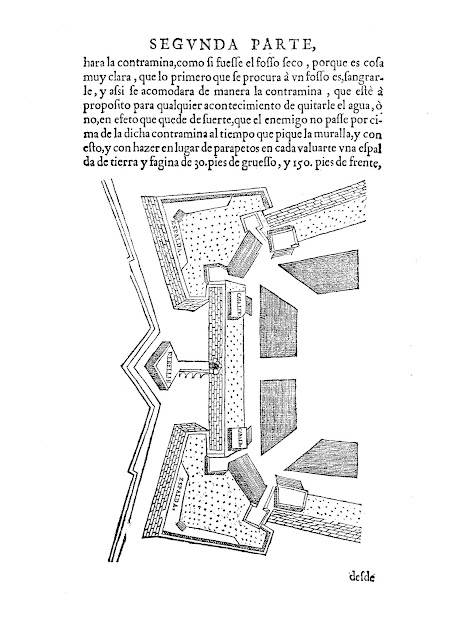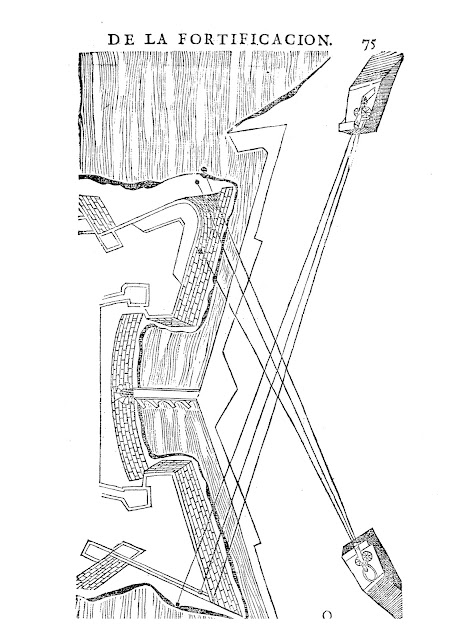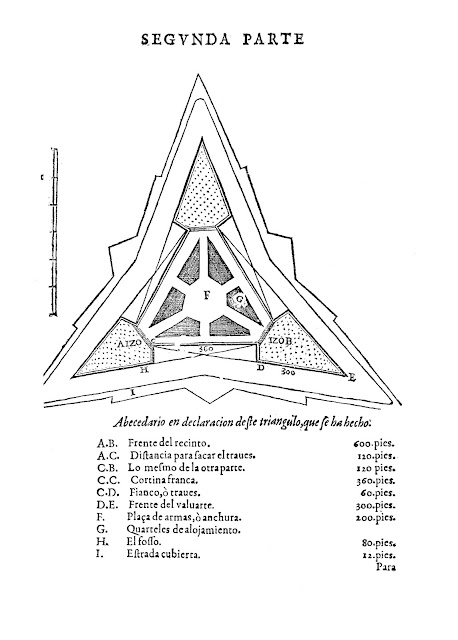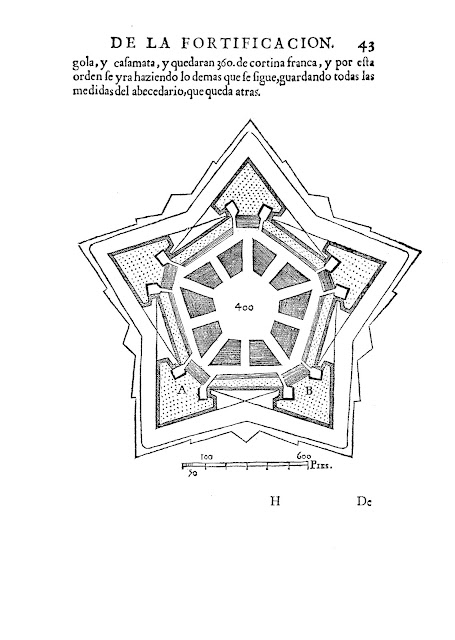
Saturday, October 15, 2011
"Theory and Practice of Fortifications" by Captain Cristobal de Rojas, 16th Century

Thursday, October 6, 2011
Bombs and Explosives handbook
I found this handbook of bombs and explosives -17th Century- in the Bavarian State Library during my travels through open virtual libraries around the world. But my investigation about author (Hans G Schirvatt?) concluded with a poor-to-nothing result. The only reference I could find is that all weapons shown in this handbook were used during 17th century first quarter European wars, and were contemporaneous to Flandes war –also known as eighty years war or Netherlands independence war from Spain-.
Was during this war when the use of bombs with temporizers reached an incredible level of perfection, because some episodes –especially for city sieges like Breda- were based on “underground techniques”: an special task force of military engineers dig tunnels to approach enemy troops, put the bombs and grenades with combustion or mechanical based temporizers and escape using the same tunnel, with time enough –sometimes not- to avoid explosion. An authentic massive destruction weapon manual in 17th Century.
Saturday, October 1, 2011
The indecipherable and mysterious “Voynich Manuscript”
I’ve been obsessed with this manuscript since 2008, when I first found it in the open Beinecke rare book & manuscript library of Yale University. Around a year after, in 2009, University of Arizona made C14 test and revealed that this codex is not a joke, like some experts still assert, and was commissioned (with 95% confidence) between 1404 and 1438.
Voynich manuscript is written in an unidentified language, apparently based on roman minuscule characters. The manuscript is a mistery although best cryptographers around the world have tried: after second world war best American and british codebreakers –who decoded german “enigma” used as communication protocol for nazi submarine weapon- and later a team of NSA cryptographers. No results so far, so the mistery remains. It’s richly illuminated and this allowed experts to consider following “sections” –like a general purpose encyclopedia-: Herbal, Astronomical, Biological, Cosmological, and Pharmaceutical or Medical. Regarding authorship, is a mystery like the codex itself: some theories point to Franciscan Friar Roger Bacon (not after C14 tests), Alchemist Edward Kelley, etc. The name “Voynich manuscript” has its origin in Wilfrid Voynich, antiquarian, who acquired the codex in 1912.
Direct link to Beinecke rare book & manuscript library of Yale University, is here (jpg collection with fair resolution, not complete). Wikipedia’s voynich manuscript article (very detailed) here. University of Arizona announcement of radiocarbon results is here.
Voynich manuscript is written in an unidentified language, apparently based on roman minuscule characters. The manuscript is a mistery although best cryptographers around the world have tried: after second world war best American and british codebreakers –who decoded german “enigma” used as communication protocol for nazi submarine weapon- and later a team of NSA cryptographers. No results so far, so the mistery remains. It’s richly illuminated and this allowed experts to consider following “sections” –like a general purpose encyclopedia-: Herbal, Astronomical, Biological, Cosmological, and Pharmaceutical or Medical. Regarding authorship, is a mystery like the codex itself: some theories point to Franciscan Friar Roger Bacon (not after C14 tests), Alchemist Edward Kelley, etc. The name “Voynich manuscript” has its origin in Wilfrid Voynich, antiquarian, who acquired the codex in 1912.
Direct link to Beinecke rare book & manuscript library of Yale University, is here (jpg collection with fair resolution, not complete). Wikipedia’s voynich manuscript article (very detailed) here. University of Arizona announcement of radiocarbon results is here.
Labels:
Astronomical,
Cosmological,
herbarium,
Medical,
Voynich
Subscribe to:
Posts (Atom)



















